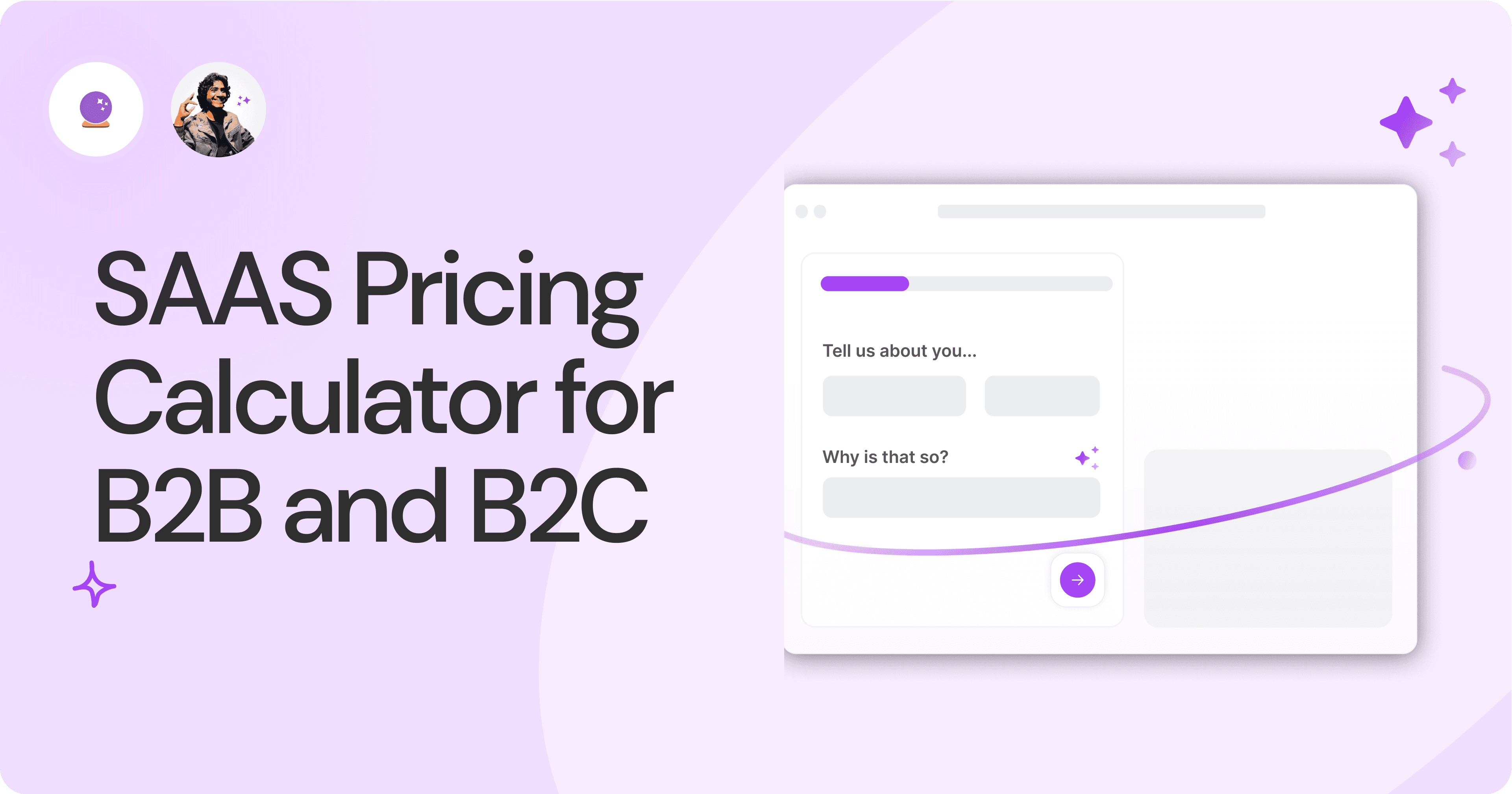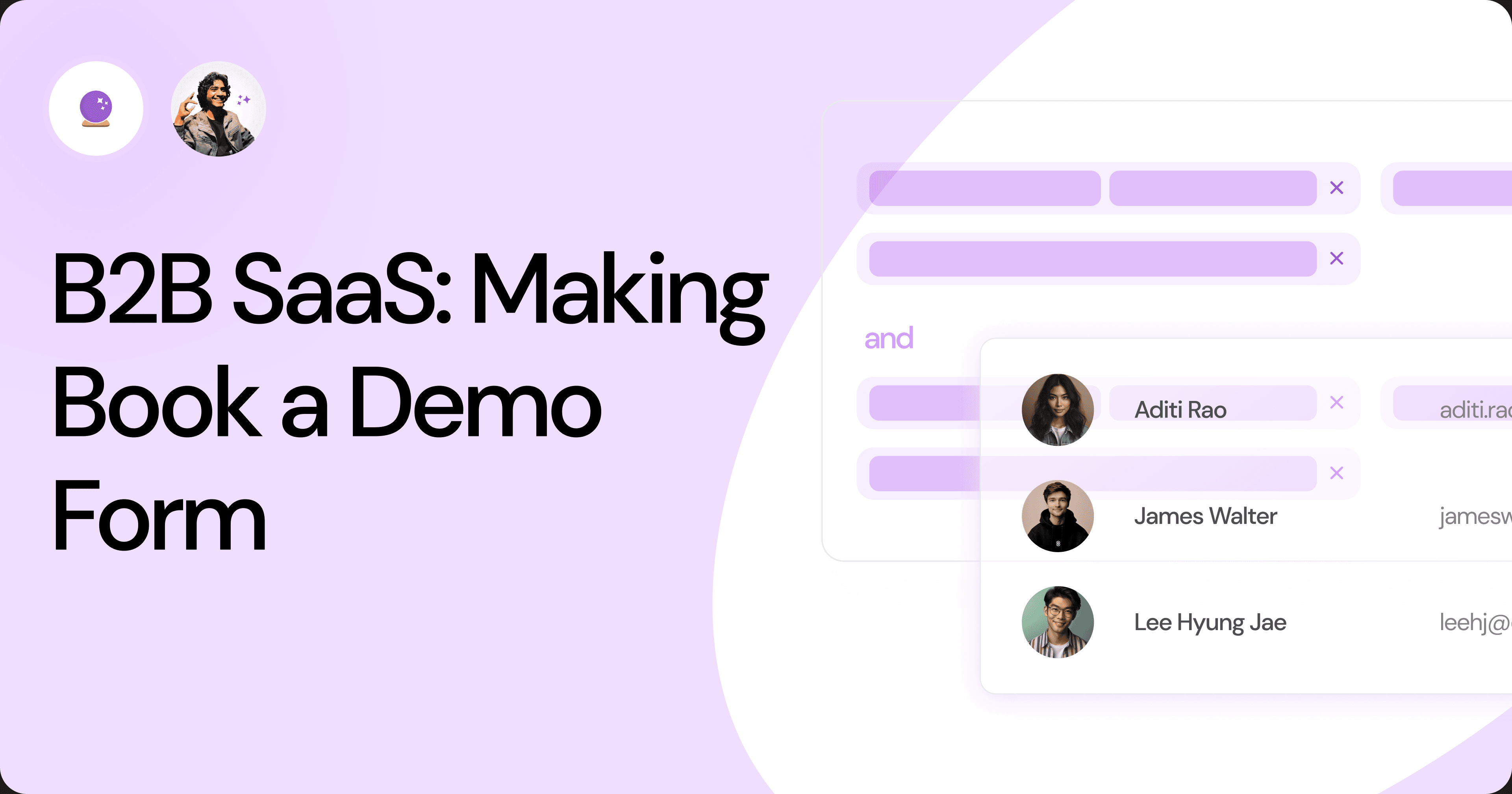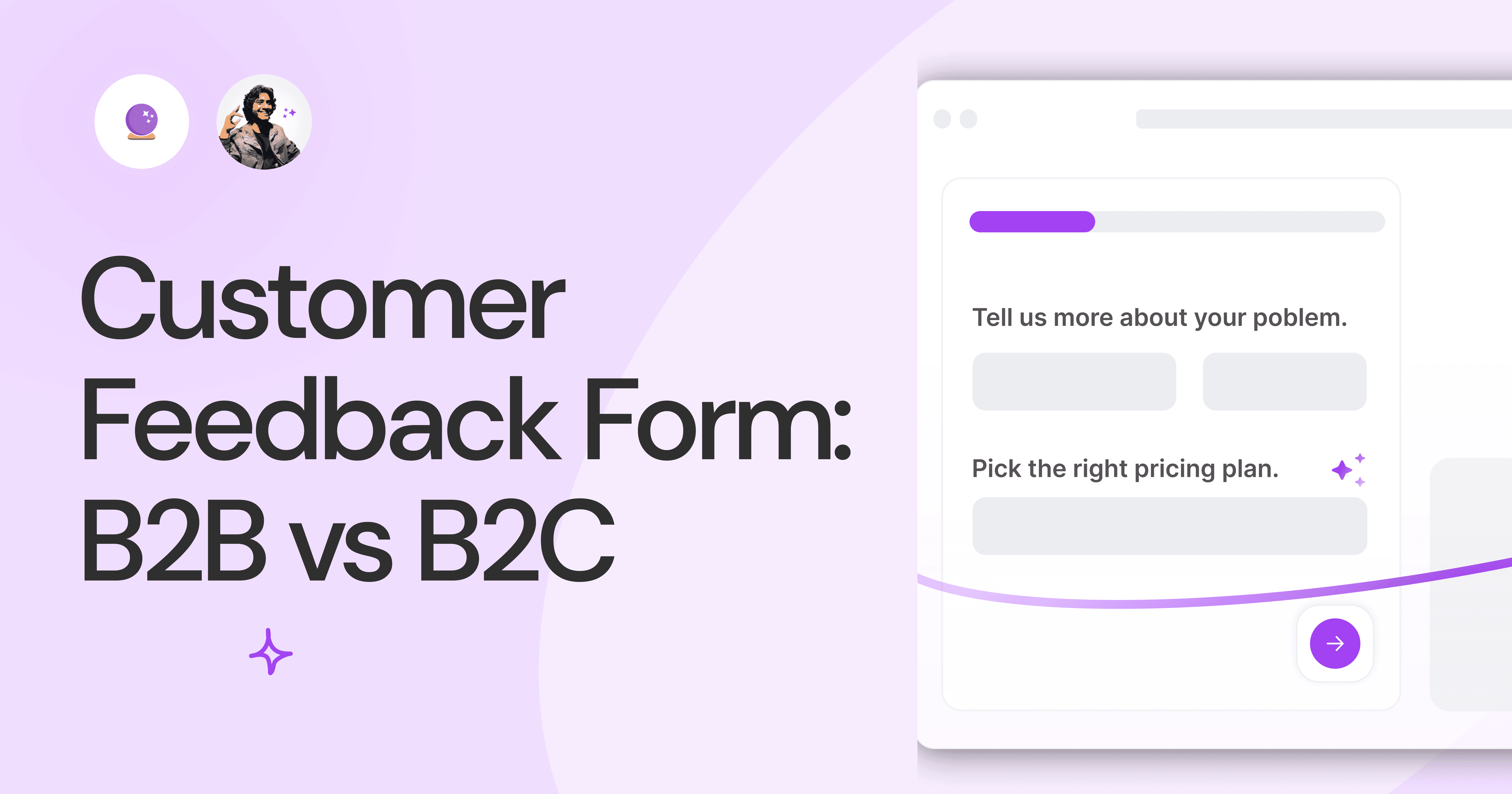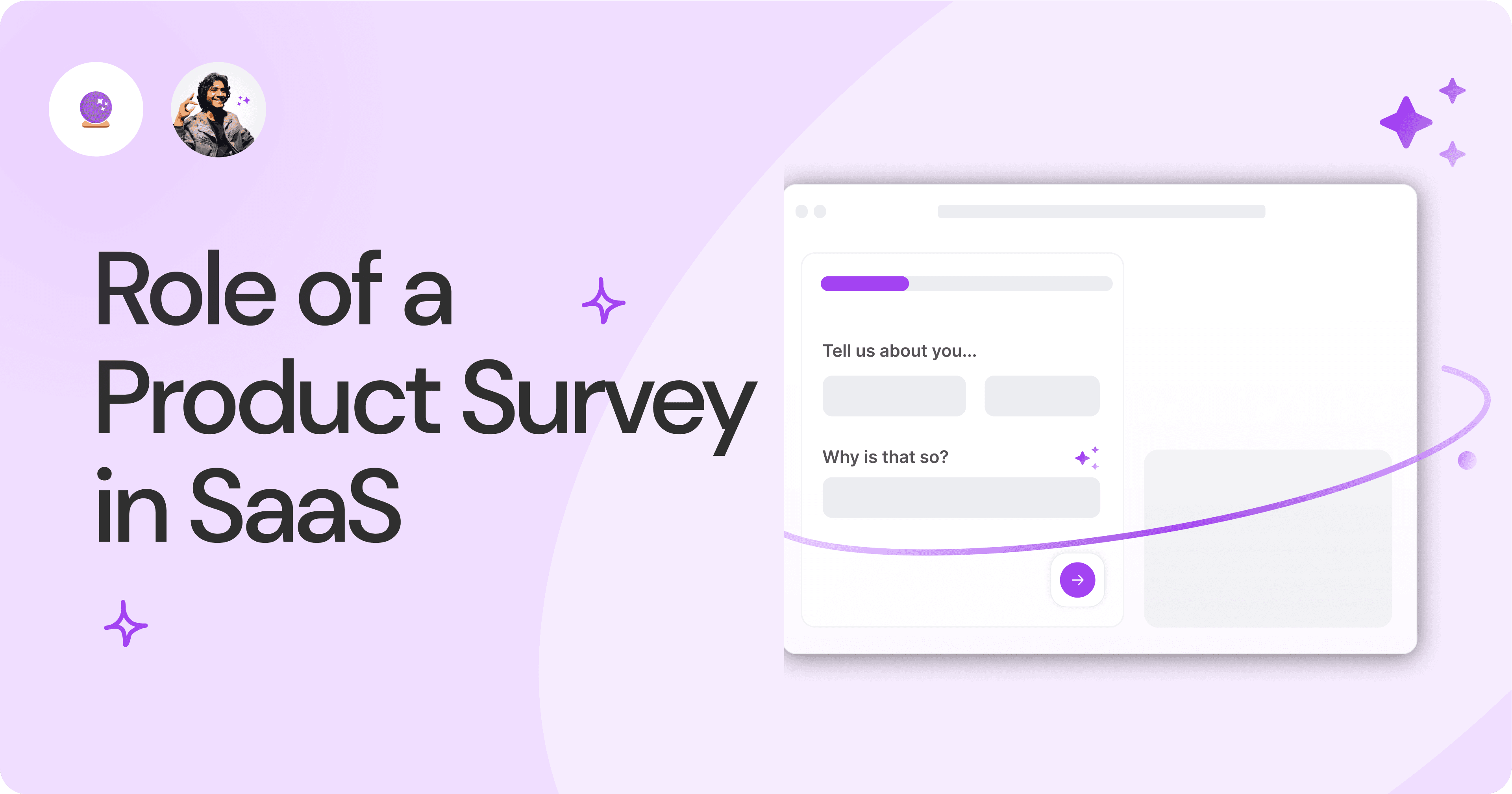Uncover customer’s powerful review analysis for business growth
Uncover customer’s powerful review analysis for business growth
Uncover customer’s powerful review analysis for business growth
Learn how to analyze customer reviews to understand your audience, improve products, and boost customer satisfaction.
Learn how to analyze customer reviews to understand your audience, improve products, and boost customer satisfaction.
Learn how to analyze customer reviews to understand your audience, improve products, and boost customer satisfaction.



Crafting a winning business strategy requires understanding your customers on a deeper level. Did you know that 95% of consumers read online reviews before purchasing? This highlights the power of customer reviews - a treasure trove of insights waiting to be unlocked through customer review analysis.
In today's data-driven world, review analysis empowers businesses to make informed decisions based on real customer experiences. Imagine being able to identify your product's most loved features, pinpoint recurring customer pain points, and even predict future trends. This article will equip you with the knowledge and tools to transform customer reviews into actionable business intelligence.
What is review analysis?
Review analysis transforms unstructured customer reviews – text filled with opinions and experiences – into structured, actionable insights. By analyzing this data, businesses can achieve several key objectives:
Product improvement: Based on customer feedback, identify areas for improvement. For example, if a recurring theme in reviews mentions difficulty using a particular feature, this highlights a need for improvement or better user guidance.
Bug detection: Uncover technical glitches and usability issues mentioned in reviews. Promptly addressing these bugs can significantly enhance the customer experience.
Enhanced customer experience: Gain insights into customer frustrations and implement changes to improve satisfaction. Review analysis can reveal areas where your customer journey might be cumbersome or confusing, allowing you to streamline the process.
Review analysis also plays a crucial role in competitive analysis by revealing customer sentiment towards competitors' products. This intel can refine your marketing strategy and position your brand more effectively. Imagine identifying a feature highly praised in competitor reviews that your product lacks. By incorporating a similar feature, you can gain a competitive edge.
Why is review analysis important?

Customer reviews are a direct line to your audience's thoughts and needs. By analyzing this feedback, you can:
Understand customer needs: Uncover direct and indirect feedback through comments and feature requests. Reviews can provide valuable insights into customer expectations and desired functionalities.
Drive product development: Gain valuable insights to inform product roadmaps and prioritize features that resonate with your customers. By understanding what features customers love and what they find lacking, you can make data-driven decisions about product development.
Boost customer satisfaction: Proactively address customer concerns and implement improvements based on review analysis to create a more positive experience. Ultimately, happy customers lead to repeat business and increased loyalty.
Drive business growth: Positive reviews attract customers and encourage them to spend more. Businesses with excellent reviews can see a 31% increase in customer spending. By harnessing the power of review analysis, you can cultivate a positive online reputation that fuels business growth.
Now that we've nailed down why digging through reviews is a game-changer, let's explore where these gold mines of feedback can be found.
Sources of customer reviews:
Customer feedback comes in two main forms: direct and indirect.
Direct feedback: This includes data collected through CSAT (Customer Satisfaction), NPS (Net Promoter Score), and CES (Customer Effort Score) surveys, as well as insights from direct customer conversations. These surveys provide a structured way to gather feedback, while conversations with customer support can offer rich qualitative insights.
Indirect feedback encompasses reviews left on platforms like Trustpilot and G2, social media mentions on Facebook and Instagram, and ratings on Google Business Profile. Social media can be a treasure trove of unguarded customer sentiment, while review platforms provide a dedicated space for customers to share their experiences.
You can paint a comprehensive picture of customer sentiment by gathering feedback from all these sources.
How to analyze your reviews?
Turning a mountain of reviews into actionable insights requires a systematic approach. Here's how you can effectively analyze your customer reviews:
Collect and integrate reviews: Utilize feedback analytics solutions with thematic analysis tools to gather and integrate reviews from various platforms. These tools can automate the process of collecting reviews from various sources, saving time and effort.
Visualize data: Employ tools like metaform, MonkeyLearn or any other to identify key customer sentiment trends, recurring themes, and feature requests through data visualization. Visualizing data allows you to see patterns and trends that might be difficult to identify by simply reading through reviews.
Clean and standardize data: Ensure your data is clean and standardized for effective analysis. Sentiment analysis tools can then uncover deeper insights from the text. Cleaning and standardizing your data ensures that the sentiment analysis tools can accurately interpret the meaning of the reviews.
Drill down for understanding: Categorize and analyze feedback to understand the "why" behind customer perspectives. Seek to uncover the root cause of customer frustrations and identify areas for improvement. Don't just settle for understanding that a customer is frustrated; use your analysis to pinpoint the exact reason for their frustration.
Step-by-step process for efficient review analysis:

By following this step-by-step process, you can streamline your review analysis workflow:
Step 1: Identify your tool:
Choose a suitable review analysis tool and integrate your customer feedback from various sources. Various tools are available, so consider factors like budget, ease of use, and desired features when making your selection.
Step 2: Analyze and interpret:
Analyze the results to identify top features, recurring bugs, and customer requests. Pay close attention to both positive and negative feedback to gain a well-rounded understanding of customer sentiment.
Step 3: Visualize and share:
Leverage visualization tools to present your key insights in a clear and compelling way for stakeholders. Charts, graphs, and infographics can effectively communicate complex data and make it easier for decision-makers to understand the importance of customer feedback.
Step 4: Continuous improvement:
Review analysis should be an ongoing process to ensure you have access to the latest customer feedback and adapt your strategy accordingly. Schedule regular reviews to analyze new data and identify emerging trends.
Tools and technologies for review analysis:
Several powerful tools and technologies can empower you to extract valuable insights from customer reviews, bridging the data gap between businesses and customers.
Feedback analytics platforms: Platforms like WorkHack, MonkeyLearn, and Idiomatic provide automated text analysis capabilities. These platforms can analyze large volumes of text data, identify key themes and sentiments, and categorize feedback based on predefined criteria. Platforms like WorkHack, MonkeyLearn, and Idiomatic provide automated text analysis capabilities. These platforms can analyze large volumes of text data, identify key themes and sentiments, and categorize feedback based on predefined criteria. WorkHack, focusing on AI-powered forms, can be particularly useful for analyzing feedback gathered through forms and surveys.
Sentiment analysis tools: These tools analyze the emotional tone of reviews, helping you understand customer sentiment. Sentiment analysis can help you categorize reviews as positive, negative, or neutral and identify areas where customers may be experiencing frustration. WorkHack offers sentiment analysis as part of its form analytics suite, allowing you to understand the emotional undercurrent of customer feedback.
Visualization tools: Data visualization tools like Tableau or Power BI allow you to create charts, graphs, and other visuals that effectively communicate customer feedback and insights. While WorkHack doesn't offer dedicated visualization tools, it can integrate with popular visualization platforms, allowing you to seamlessly transform your review analysis data into clear and compelling presentations.
By leveraging a combination of these tools and WorkHack's form analytics capabilities, you can gain a holistic understanding of customer sentiment and extract actionable insights to improve your products, services, and overall customer experience.
Conclusion:
Review analysis is not a one-time activity; it's an ongoing process that can provide invaluable insights to fuel business growth. By consistently analyzing customer reviews, you can stay ahead of the curve (Identify emerging customer needs and preferences before your competitors), build stronger customer relationships (Respond to customer feedback and demonstrate that you care about their experience) and make data-driven decisions (Leverage customer insights to inform product development, marketing strategies, and overall business direction).
Take advantage of our free trial to experience the power of WorkHack's AI-powered forms and see how easy it is to gather valuable customer feedback. You can also explore our integration capabilities to seamlessly connect WorkHack with your favourite review analysis and data visualization tools.
Don't let valuable customer insights go untapped. Sign up for your free trial today and build a better customer experience!
Crafting a winning business strategy requires understanding your customers on a deeper level. Did you know that 95% of consumers read online reviews before purchasing? This highlights the power of customer reviews - a treasure trove of insights waiting to be unlocked through customer review analysis.
In today's data-driven world, review analysis empowers businesses to make informed decisions based on real customer experiences. Imagine being able to identify your product's most loved features, pinpoint recurring customer pain points, and even predict future trends. This article will equip you with the knowledge and tools to transform customer reviews into actionable business intelligence.
What is review analysis?
Review analysis transforms unstructured customer reviews – text filled with opinions and experiences – into structured, actionable insights. By analyzing this data, businesses can achieve several key objectives:
Product improvement: Based on customer feedback, identify areas for improvement. For example, if a recurring theme in reviews mentions difficulty using a particular feature, this highlights a need for improvement or better user guidance.
Bug detection: Uncover technical glitches and usability issues mentioned in reviews. Promptly addressing these bugs can significantly enhance the customer experience.
Enhanced customer experience: Gain insights into customer frustrations and implement changes to improve satisfaction. Review analysis can reveal areas where your customer journey might be cumbersome or confusing, allowing you to streamline the process.
Review analysis also plays a crucial role in competitive analysis by revealing customer sentiment towards competitors' products. This intel can refine your marketing strategy and position your brand more effectively. Imagine identifying a feature highly praised in competitor reviews that your product lacks. By incorporating a similar feature, you can gain a competitive edge.
Why is review analysis important?

Customer reviews are a direct line to your audience's thoughts and needs. By analyzing this feedback, you can:
Understand customer needs: Uncover direct and indirect feedback through comments and feature requests. Reviews can provide valuable insights into customer expectations and desired functionalities.
Drive product development: Gain valuable insights to inform product roadmaps and prioritize features that resonate with your customers. By understanding what features customers love and what they find lacking, you can make data-driven decisions about product development.
Boost customer satisfaction: Proactively address customer concerns and implement improvements based on review analysis to create a more positive experience. Ultimately, happy customers lead to repeat business and increased loyalty.
Drive business growth: Positive reviews attract customers and encourage them to spend more. Businesses with excellent reviews can see a 31% increase in customer spending. By harnessing the power of review analysis, you can cultivate a positive online reputation that fuels business growth.
Now that we've nailed down why digging through reviews is a game-changer, let's explore where these gold mines of feedback can be found.
Sources of customer reviews:
Customer feedback comes in two main forms: direct and indirect.
Direct feedback: This includes data collected through CSAT (Customer Satisfaction), NPS (Net Promoter Score), and CES (Customer Effort Score) surveys, as well as insights from direct customer conversations. These surveys provide a structured way to gather feedback, while conversations with customer support can offer rich qualitative insights.
Indirect feedback encompasses reviews left on platforms like Trustpilot and G2, social media mentions on Facebook and Instagram, and ratings on Google Business Profile. Social media can be a treasure trove of unguarded customer sentiment, while review platforms provide a dedicated space for customers to share their experiences.
You can paint a comprehensive picture of customer sentiment by gathering feedback from all these sources.
How to analyze your reviews?
Turning a mountain of reviews into actionable insights requires a systematic approach. Here's how you can effectively analyze your customer reviews:
Collect and integrate reviews: Utilize feedback analytics solutions with thematic analysis tools to gather and integrate reviews from various platforms. These tools can automate the process of collecting reviews from various sources, saving time and effort.
Visualize data: Employ tools like metaform, MonkeyLearn or any other to identify key customer sentiment trends, recurring themes, and feature requests through data visualization. Visualizing data allows you to see patterns and trends that might be difficult to identify by simply reading through reviews.
Clean and standardize data: Ensure your data is clean and standardized for effective analysis. Sentiment analysis tools can then uncover deeper insights from the text. Cleaning and standardizing your data ensures that the sentiment analysis tools can accurately interpret the meaning of the reviews.
Drill down for understanding: Categorize and analyze feedback to understand the "why" behind customer perspectives. Seek to uncover the root cause of customer frustrations and identify areas for improvement. Don't just settle for understanding that a customer is frustrated; use your analysis to pinpoint the exact reason for their frustration.
Step-by-step process for efficient review analysis:

By following this step-by-step process, you can streamline your review analysis workflow:
Step 1: Identify your tool:
Choose a suitable review analysis tool and integrate your customer feedback from various sources. Various tools are available, so consider factors like budget, ease of use, and desired features when making your selection.
Step 2: Analyze and interpret:
Analyze the results to identify top features, recurring bugs, and customer requests. Pay close attention to both positive and negative feedback to gain a well-rounded understanding of customer sentiment.
Step 3: Visualize and share:
Leverage visualization tools to present your key insights in a clear and compelling way for stakeholders. Charts, graphs, and infographics can effectively communicate complex data and make it easier for decision-makers to understand the importance of customer feedback.
Step 4: Continuous improvement:
Review analysis should be an ongoing process to ensure you have access to the latest customer feedback and adapt your strategy accordingly. Schedule regular reviews to analyze new data and identify emerging trends.
Tools and technologies for review analysis:
Several powerful tools and technologies can empower you to extract valuable insights from customer reviews, bridging the data gap between businesses and customers.
Feedback analytics platforms: Platforms like WorkHack, MonkeyLearn, and Idiomatic provide automated text analysis capabilities. These platforms can analyze large volumes of text data, identify key themes and sentiments, and categorize feedback based on predefined criteria. Platforms like WorkHack, MonkeyLearn, and Idiomatic provide automated text analysis capabilities. These platforms can analyze large volumes of text data, identify key themes and sentiments, and categorize feedback based on predefined criteria. WorkHack, focusing on AI-powered forms, can be particularly useful for analyzing feedback gathered through forms and surveys.
Sentiment analysis tools: These tools analyze the emotional tone of reviews, helping you understand customer sentiment. Sentiment analysis can help you categorize reviews as positive, negative, or neutral and identify areas where customers may be experiencing frustration. WorkHack offers sentiment analysis as part of its form analytics suite, allowing you to understand the emotional undercurrent of customer feedback.
Visualization tools: Data visualization tools like Tableau or Power BI allow you to create charts, graphs, and other visuals that effectively communicate customer feedback and insights. While WorkHack doesn't offer dedicated visualization tools, it can integrate with popular visualization platforms, allowing you to seamlessly transform your review analysis data into clear and compelling presentations.
By leveraging a combination of these tools and WorkHack's form analytics capabilities, you can gain a holistic understanding of customer sentiment and extract actionable insights to improve your products, services, and overall customer experience.
Conclusion:
Review analysis is not a one-time activity; it's an ongoing process that can provide invaluable insights to fuel business growth. By consistently analyzing customer reviews, you can stay ahead of the curve (Identify emerging customer needs and preferences before your competitors), build stronger customer relationships (Respond to customer feedback and demonstrate that you care about their experience) and make data-driven decisions (Leverage customer insights to inform product development, marketing strategies, and overall business direction).
Take advantage of our free trial to experience the power of WorkHack's AI-powered forms and see how easy it is to gather valuable customer feedback. You can also explore our integration capabilities to seamlessly connect WorkHack with your favourite review analysis and data visualization tools.
Don't let valuable customer insights go untapped. Sign up for your free trial today and build a better customer experience!
Crafting a winning business strategy requires understanding your customers on a deeper level. Did you know that 95% of consumers read online reviews before purchasing? This highlights the power of customer reviews - a treasure trove of insights waiting to be unlocked through customer review analysis.
In today's data-driven world, review analysis empowers businesses to make informed decisions based on real customer experiences. Imagine being able to identify your product's most loved features, pinpoint recurring customer pain points, and even predict future trends. This article will equip you with the knowledge and tools to transform customer reviews into actionable business intelligence.
What is review analysis?
Review analysis transforms unstructured customer reviews – text filled with opinions and experiences – into structured, actionable insights. By analyzing this data, businesses can achieve several key objectives:
Product improvement: Based on customer feedback, identify areas for improvement. For example, if a recurring theme in reviews mentions difficulty using a particular feature, this highlights a need for improvement or better user guidance.
Bug detection: Uncover technical glitches and usability issues mentioned in reviews. Promptly addressing these bugs can significantly enhance the customer experience.
Enhanced customer experience: Gain insights into customer frustrations and implement changes to improve satisfaction. Review analysis can reveal areas where your customer journey might be cumbersome or confusing, allowing you to streamline the process.
Review analysis also plays a crucial role in competitive analysis by revealing customer sentiment towards competitors' products. This intel can refine your marketing strategy and position your brand more effectively. Imagine identifying a feature highly praised in competitor reviews that your product lacks. By incorporating a similar feature, you can gain a competitive edge.
Why is review analysis important?

Customer reviews are a direct line to your audience's thoughts and needs. By analyzing this feedback, you can:
Understand customer needs: Uncover direct and indirect feedback through comments and feature requests. Reviews can provide valuable insights into customer expectations and desired functionalities.
Drive product development: Gain valuable insights to inform product roadmaps and prioritize features that resonate with your customers. By understanding what features customers love and what they find lacking, you can make data-driven decisions about product development.
Boost customer satisfaction: Proactively address customer concerns and implement improvements based on review analysis to create a more positive experience. Ultimately, happy customers lead to repeat business and increased loyalty.
Drive business growth: Positive reviews attract customers and encourage them to spend more. Businesses with excellent reviews can see a 31% increase in customer spending. By harnessing the power of review analysis, you can cultivate a positive online reputation that fuels business growth.
Now that we've nailed down why digging through reviews is a game-changer, let's explore where these gold mines of feedback can be found.
Sources of customer reviews:
Customer feedback comes in two main forms: direct and indirect.
Direct feedback: This includes data collected through CSAT (Customer Satisfaction), NPS (Net Promoter Score), and CES (Customer Effort Score) surveys, as well as insights from direct customer conversations. These surveys provide a structured way to gather feedback, while conversations with customer support can offer rich qualitative insights.
Indirect feedback encompasses reviews left on platforms like Trustpilot and G2, social media mentions on Facebook and Instagram, and ratings on Google Business Profile. Social media can be a treasure trove of unguarded customer sentiment, while review platforms provide a dedicated space for customers to share their experiences.
You can paint a comprehensive picture of customer sentiment by gathering feedback from all these sources.
How to analyze your reviews?
Turning a mountain of reviews into actionable insights requires a systematic approach. Here's how you can effectively analyze your customer reviews:
Collect and integrate reviews: Utilize feedback analytics solutions with thematic analysis tools to gather and integrate reviews from various platforms. These tools can automate the process of collecting reviews from various sources, saving time and effort.
Visualize data: Employ tools like metaform, MonkeyLearn or any other to identify key customer sentiment trends, recurring themes, and feature requests through data visualization. Visualizing data allows you to see patterns and trends that might be difficult to identify by simply reading through reviews.
Clean and standardize data: Ensure your data is clean and standardized for effective analysis. Sentiment analysis tools can then uncover deeper insights from the text. Cleaning and standardizing your data ensures that the sentiment analysis tools can accurately interpret the meaning of the reviews.
Drill down for understanding: Categorize and analyze feedback to understand the "why" behind customer perspectives. Seek to uncover the root cause of customer frustrations and identify areas for improvement. Don't just settle for understanding that a customer is frustrated; use your analysis to pinpoint the exact reason for their frustration.
Step-by-step process for efficient review analysis:

By following this step-by-step process, you can streamline your review analysis workflow:
Step 1: Identify your tool:
Choose a suitable review analysis tool and integrate your customer feedback from various sources. Various tools are available, so consider factors like budget, ease of use, and desired features when making your selection.
Step 2: Analyze and interpret:
Analyze the results to identify top features, recurring bugs, and customer requests. Pay close attention to both positive and negative feedback to gain a well-rounded understanding of customer sentiment.
Step 3: Visualize and share:
Leverage visualization tools to present your key insights in a clear and compelling way for stakeholders. Charts, graphs, and infographics can effectively communicate complex data and make it easier for decision-makers to understand the importance of customer feedback.
Step 4: Continuous improvement:
Review analysis should be an ongoing process to ensure you have access to the latest customer feedback and adapt your strategy accordingly. Schedule regular reviews to analyze new data and identify emerging trends.
Tools and technologies for review analysis:
Several powerful tools and technologies can empower you to extract valuable insights from customer reviews, bridging the data gap between businesses and customers.
Feedback analytics platforms: Platforms like WorkHack, MonkeyLearn, and Idiomatic provide automated text analysis capabilities. These platforms can analyze large volumes of text data, identify key themes and sentiments, and categorize feedback based on predefined criteria. Platforms like WorkHack, MonkeyLearn, and Idiomatic provide automated text analysis capabilities. These platforms can analyze large volumes of text data, identify key themes and sentiments, and categorize feedback based on predefined criteria. WorkHack, focusing on AI-powered forms, can be particularly useful for analyzing feedback gathered through forms and surveys.
Sentiment analysis tools: These tools analyze the emotional tone of reviews, helping you understand customer sentiment. Sentiment analysis can help you categorize reviews as positive, negative, or neutral and identify areas where customers may be experiencing frustration. WorkHack offers sentiment analysis as part of its form analytics suite, allowing you to understand the emotional undercurrent of customer feedback.
Visualization tools: Data visualization tools like Tableau or Power BI allow you to create charts, graphs, and other visuals that effectively communicate customer feedback and insights. While WorkHack doesn't offer dedicated visualization tools, it can integrate with popular visualization platforms, allowing you to seamlessly transform your review analysis data into clear and compelling presentations.
By leveraging a combination of these tools and WorkHack's form analytics capabilities, you can gain a holistic understanding of customer sentiment and extract actionable insights to improve your products, services, and overall customer experience.
Conclusion:
Review analysis is not a one-time activity; it's an ongoing process that can provide invaluable insights to fuel business growth. By consistently analyzing customer reviews, you can stay ahead of the curve (Identify emerging customer needs and preferences before your competitors), build stronger customer relationships (Respond to customer feedback and demonstrate that you care about their experience) and make data-driven decisions (Leverage customer insights to inform product development, marketing strategies, and overall business direction).
Take advantage of our free trial to experience the power of WorkHack's AI-powered forms and see how easy it is to gather valuable customer feedback. You can also explore our integration capabilities to seamlessly connect WorkHack with your favourite review analysis and data visualization tools.
Don't let valuable customer insights go untapped. Sign up for your free trial today and build a better customer experience!

SAAS Pricing Calculators: B2B v B2C Online Forms.
The SaaS pricing calculator is an essential tool for both B2B and B2C SaaS companies. But how do you build it, right? We have you covered.

B2B SaaS: Making Book a Demo Form.
Having the perfect book a demo form for B2B SaaS is the first step in capturing leads. There are a few fundamental techniques to get this form right. Read on.

How to Get Started With SaaS Onboarding.
SaaS onboarding is essential for customer onboarding in B2B and B2C SaaS. Let’s understand its fundamentals, including the metrics.

Customer Feedback Form: B2B vs B2C.
Why is customer feedback important? Because it dictates progress on B2B and B2B products and services for the customer to meet their goals.

SaaS Customer Feedback Form: 6 Main Types.
As much as SaaS is self-serve, the role of a customer feedback form is highly relevant. There are different types, each with its use case and sections.

Role of a Product Survey in SaaS.
SaaS is all about creating products for specific use cases. This is where a product survey becomes all the more important to know the user deeply.

Should You Do a SaaS Market Survey?
Every SaaS company wants to grow fast. But without a market survey, growth isn't possible or sustainable. Let’s see how to do a market survey.

SAAS Pricing Calculators: B2B v B2C Online Forms.
The SaaS pricing calculator is an essential tool for both B2B and B2C SaaS companies. But how do you build it, right? We have you covered.

B2B SaaS: Making Book a Demo Form.
Having the perfect book a demo form for B2B SaaS is the first step in capturing leads. There are a few fundamental techniques to get this form right. Read on.

How to Get Started With SaaS Onboarding.
SaaS onboarding is essential for customer onboarding in B2B and B2C SaaS. Let’s understand its fundamentals, including the metrics.

Customer Feedback Form: B2B vs B2C.
Why is customer feedback important? Because it dictates progress on B2B and B2B products and services for the customer to meet their goals.

SaaS Customer Feedback Form: 6 Main Types.
As much as SaaS is self-serve, the role of a customer feedback form is highly relevant. There are different types, each with its use case and sections.

Role of a Product Survey in SaaS.
SaaS is all about creating products for specific use cases. This is where a product survey becomes all the more important to know the user deeply.

Should You Do a SaaS Market Survey?
Every SaaS company wants to grow fast. But without a market survey, growth isn't possible or sustainable. Let’s see how to do a market survey.

SAAS Pricing Calculators: B2B v B2C Online Forms.
The SaaS pricing calculator is an essential tool for both B2B and B2C SaaS companies. But how do you build it, right? We have you covered.

B2B SaaS: Making Book a Demo Form.
Having the perfect book a demo form for B2B SaaS is the first step in capturing leads. There are a few fundamental techniques to get this form right. Read on.

How to Get Started With SaaS Onboarding.
SaaS onboarding is essential for customer onboarding in B2B and B2C SaaS. Let’s understand its fundamentals, including the metrics.

Customer Feedback Form: B2B vs B2C.
Why is customer feedback important? Because it dictates progress on B2B and B2B products and services for the customer to meet their goals.

SaaS Customer Feedback Form: 6 Main Types.
As much as SaaS is self-serve, the role of a customer feedback form is highly relevant. There are different types, each with its use case and sections.

Role of a Product Survey in SaaS.
SaaS is all about creating products for specific use cases. This is where a product survey becomes all the more important to know the user deeply.

Should You Do a SaaS Market Survey?
Every SaaS company wants to grow fast. But without a market survey, growth isn't possible or sustainable. Let’s see how to do a market survey.

Nine Types of Healthcare and Medical Forms.
Medical forms are a must-have for any healthcare business or practitioner. Learn about the different kinds of medical and healthcare forms.

4 Tips for Better Medical History Forms.
Medical history forms are central to patient care, onboarding, and medical administration records. Learn how to make them easier to fill.

How to Build Mental Health Intake Forms?
Mental health intake forms are not like patient intake forms. Mental health intake forms deal with far more sensitive data and have specific design methods.

What, Why and How of Telemedicine Forms.
Telemedicine is on the rise and with different form builders out there, which one best suits your needs as a healthcare services provider?

3 Reasons for Major Drop-Offs in Medical Forms.
No matter which healthcare form we pick, there are major drop-off reasons. We shall dive into the top 3 and learn how to resolve them in your next form.

Patient Onboarding Forms - From Click to Clinic.
Patient onboarding forms are the first touchpoint for patients; getting this right for higher conversion rates is a must-have. Learn how to perfect them now.

5 Key Parts of a Good Patient Satisfaction Form.
The goal of patient satisfaction surveys is to course-correct the services of a healthcare provider. Patient feedback leads to a culture of patient-centric care.

Build Quick and Easy Medical Release Forms.
Every HIPAA-compliant healthcare provider comes across medical release forms that involve details from medical history forms. Can they be shipped fast? Yes.

SAAS Pricing Calculators: B2B v B2C Online Forms.
The SaaS pricing calculator is an essential tool for both B2B and B2C SaaS companies. But how do you build it, right? We have you covered.

B2B SaaS: Making Book a Demo Form.
Having the perfect book a demo form for B2B SaaS is the first step in capturing leads. There are a few fundamental techniques to get this form right. Read on.

How to Get Started With SaaS Onboarding.
SaaS onboarding is essential for customer onboarding in B2B and B2C SaaS. Let’s understand its fundamentals, including the metrics.

Customer Feedback Form: B2B vs B2C.
Why is customer feedback important? Because it dictates progress on B2B and B2B products and services for the customer to meet their goals.

SaaS Customer Feedback Form: 6 Main Types.
As much as SaaS is self-serve, the role of a customer feedback form is highly relevant. There are different types, each with its use case and sections.

Role of a Product Survey in SaaS.
SaaS is all about creating products for specific use cases. This is where a product survey becomes all the more important to know the user deeply.

Should You Do a SaaS Market Survey?
Every SaaS company wants to grow fast. But without a market survey, growth isn't possible or sustainable. Let’s see how to do a market survey.
Subscribe to stay updated.
Subscribe to stay updated.
Subscribe to stay updated.
HC

HC

HC

HC

70+ people from across industries read our emails.
HC

HC

70+ people from across industries read our emails.
HC

HC

HC

70+ people from across industries read our emails.




Bangalore, India / San Francisco, US
WorkHack Inc. 2023
Bangalore, India
San Francisco, US
WorkHack Inc. 2023
WorkHack Inc. 2023
Bangalore, India / San Francisco, US
WorkHack Inc. 2023
Bangalore, India / San Francisco, US



